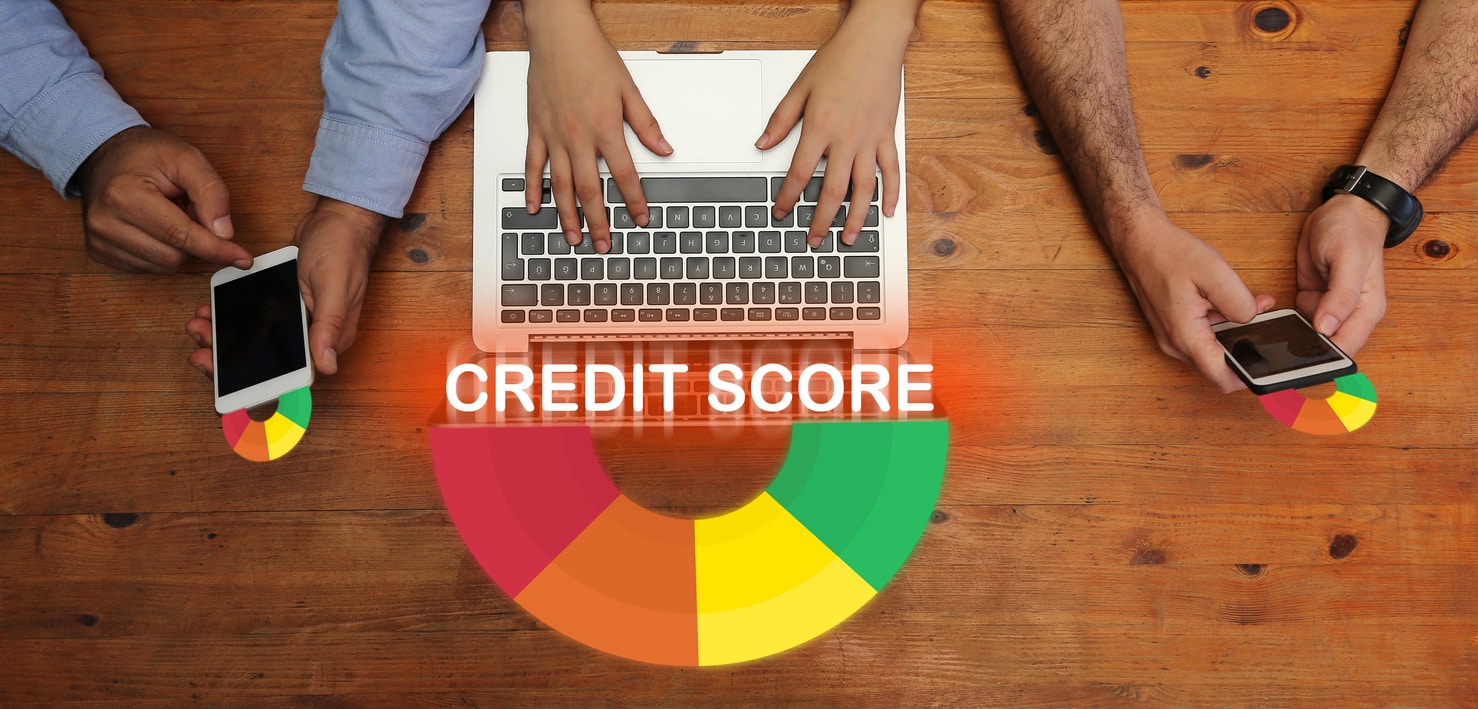Did you know?
Approximately 33% of interviewers decide whether to hire a candidate within the first 90 seconds of an interview?
This startling statistic underscores just how vital a compelling self introduction for interview is to make a strong first impression.
Your introduction sets the tone for the rest of the conversation, giving you the chance to highlight your skills, experience, & personality effectively.
In this blog, we’ll guide you through the art of crafting a memorable introduction that leaves a lasting impact on your interviewer.
Why a Strong Introduction Matters?
First impressions are incredibly powerful, often shaping how we’re perceived for the rest of the interaction. A positive self-introduction is your chance to set the stage & communicate your value to the interviewer in a matter of seconds.
- Establishing Credibility: A well-thought-out self-introduction immediately establishes your credibility. It gives the interviewer an insight into your skills, experience, & why you’re a strong candidate for the role.
- Boosting Confidence: When you craft & rehearse your self-introduction, it naturally boosts your confidence. Knowing that you’re prepared to present yourself clearly & effectively can alleviate nerves & help you feel more in control during the interview. This confidence is often contagious & leaves a lasting impression on your interviewer.
A strong introduction is more than just a formality; it’s your opportunity to show who you are, why you’re qualified, & set the stage for a positive, successful interview.
Steps to Craft a Perfect Self-Introduction
Step 1- Research & Preparation
- Understand the Company’s Culture, Job Role, & Expectations: Before crafting your self introduction for interview, take the time to research the company & the specific role you’re applying for. Understand the company’s values, mission, & culture to tailor your introduction accordingly. This helps you position yourself as a good cultural fit & shows your genuine interest in the company.
- Customize Your Introduction to Align with the Role: Ensure that your introduction highlights skills & experiences that are directly relevant to the job you’re applying for. Align your strengths with the requirements of the position, demonstrating how you can add value to the company & why you’re the perfect fit for the role.
By conducting thorough research & customizing your introduction, you can ensure that it resonates with your interviewer & reflects your preparedness for the position.
Step 2- Structuring Your Introduction
A well-structured self-introduction is key to making a positive first impression & setting the tone for a successful interview. Here’s a detailed step-by-step guide to structuring your introduction:
- Start with a Polite Greeting
Begin your introduction by greeting the interviewer with warmth & professionalism. A polite greeting immediately sets a respectful tone & shows your appreciation for the opportunity to be there. This initial interaction sets the stage for a smooth conversation.
- Example: “Good morning, I’m [Name]. Thank you for inviting me today.”
- Tip: Make sure to maintain eye contact & smile when greeting the interviewer to convey confidence.
- Provide a Brief Background
After your greeting, give a concise summary of your background, focusing on key elements such as your education, professional experience, or any relevant personal details. This helps the interviewer quickly understand who you are & what you bring to the table.
- Example: “I recently graduated with a degree in [Field] from [University], where I specialized in [specific area]. After that, I worked at [Company] for [X] years, where I gained hands-on experience in [skills].”
- Tip: Keep this section brief—just a few lines about your most relevant experiences.
- Highlight Key Achievements or Skills
This is the part where you demonstrate your value by showing achievements or skills that are relevant to the role. Highlighting accomplishments that align with the job you’re applying for will help establish your qualifications. If possible, include quantifiable results to add more impact & credibility to your claims.
- Example: “During my time at [Company], I successfully led a team to increase sales by 20% over six months by implementing a new marketing strategy.”
- Tip: Focus on one or two achievements that best reflect the skills & competencies the employer is seeking.
- Align Your Introduction with the Role
This step is crucial for making the connection between your background & the job you’re applying for. Demonstrating how your skills & experience align with the specific requirements of the role helps show you are well-prepared for the position.
- Example: “I believe my experience in [skill] & my ability to [related skill] will allow me to contribute effectively to [specific aspect of the role]. I’m excited to apply these skills at [Company], especially given your focus on [industry-specific initiative].”
- Tip: Use this opportunity to showcase your understanding of the company’s goals & values, aligning your skills with their needs.
- Conclude with Enthusiasm
End your introduction by expressing enthusiasm for the role & the opportunity to contribute to the organization. It signals your genuine interest in the position & shows the interviewer that you are motivated & eager to move forward in the conversation.
- Example: “I’m truly excited about the opportunity to bring my expertise in [Skill] to this role, & I look forward to contributing to [Company’s] continued growth & success.”
- Tip: Be sure to smile & maintain an upbeat tone to emphasize your excitement.
By following this structured framework, your self-introduction will not only be clear & concise but also impactful & memorable. Each step contributes to building your credibility, establishing rapport with the interviewer, & positioning yourself as the ideal candidate for the role.
Step 3- Understand Key Tips for Delivery
Delivering a self-introduction effectively can make a lasting impression. Here are some essential tips to ensure your introduction is confident & impactful:
- Maintain Eye Contact, Smile, & Use Confident Body Language: Non-verbal cues play a significant role in how your introduction is perceived. Eye contact shows attentiveness, while a smile conveys warmth & approachability. Stand or sit up straight with open body language to project confidence.
- Keep the Introduction Concise (1-2 Minutes): While it’s important to cover the key points, keep your introduction brief & to the point. Aim for a 1-2 minute delivery that highlights your background, achievements, & interest in the role without overwhelming the interviewer.
- Adapt Your Tone and Content Based on the Setting (Formal vs. Casual): Tailor your approach to the formality of the interview. In a formal setting, maintain professionalism & focus on your qualifications. In a more casual setting, you can add a bit more personality, but always ensure that your core message remains professional.
These simple yet powerful delivery tips can help you present yourself in the best light, boosting your chances of making a positive impression.
Step 4- Explore The Examples of Effective Self-Introductions
1. For Freshers
If you’re just starting your career & lack professional experience, focus on your education, skills, & enthusiasm for learning. A well-rounded self introduction for interview can highlight your eagerness to contribute &grow within the organization.
Example:
“Good morning, my name is [Name], & I’m a recent graduate with a degree in [Field] from [University]. During my studies, I developed a strong foundation in [mention key skills or courses]. I’m particularly interested in [specific area] because of [personal motivation or relevant project]. Although I’m new to the workforce, I’m eager to apply my knowledge & am excited about the opportunity to grow with [Company]. I’m looking forward to contributing to your team & learning from experienced professionals here.
2. For Candidates with a Few Years of Experience
For those with a few years of experience, focus on what you’ve achieved in your previous roles & how your skills can benefit the new position. Highlight accomplishments & responsibilities that are relevant to the job.
Example:
“Hello, my name is [Name], & I have three years of experience working as a [Job Title] at [Company]. In my role, I focused on [key responsibilities] & successfully [mention achievement, e.g., increased customer retention by 15%]. I have strong skills in [mention skills], & I’m particularly interested in the [specific role] at [Company] because of its commitment to [align with company goals]. I’m excited about the opportunity to bring my expertise & continue to grow professionally.”
3. For Candidates Switching Careers
If you’re transitioning into a new field, it’s important to explain why you’re making the switch, how your previous experiences relate, & what skills you bring from your prior work.
Example:
“Hi, I’m [Name], & after spending five years in [previous industry], I decided to transition into [new industry] because of my growing interest in [new field]. In my previous role at [Company], I developed transferable skills such as [mention skills], which I believe will be valuable in this new role. I’m particularly excited about [specific aspect of the new role] because it aligns with my passion for [specific interest]. I’m looking forward to applying my experience & learning more in this exciting new field.”
If you’re unsure how to discuss your job change in interviews, read How to Answer ‘Reason for a Job Change’ & get clear, actionable advice on how to handle this common question
4. For Senior-Level Candidates
If you’re applying for a senior or leadership role, emphasize your years of experience, leadership skills, & key accomplishments that show your ability to drive results and manage teams effectively.
Example:
“Good afternoon, my name is [Name], & I bring over [X] years of experience in [Industry/Field]. In my previous role as [Job Title] at [Company], I led a team of [number] people & was responsible for [key leadership duties, e.g., strategic planning, operations management]. One of my proudest achievements was [specific accomplishment, e.g., reducing costs by 25% while maintaining team morale]. I’m excited about the opportunity to contribute my leadership & expertise to [Company] and help drive its goals forward.”
5. For Freelancers or Entrepreneurs
For freelancers or entrepreneurs, highlight your diverse experience, the nature of your work, and how it’s prepared you for the role. Mention your self-management skills and ability to work independently.
Example:
“Hi, I’m [Name], and I’ve spent the past [X] years working as a freelance [Job Title], providing services in [specific areas of expertise]. Over the years, I’ve had the opportunity to work with various clients, including [mention notable clients or projects], where I was responsible for [mention key duties or outcomes]. My experience as an entrepreneur has helped me develop strong project management, problem-solving, and client relationship skills. I’m excited about this opportunity to bring my independent work experience into a collaborative setting and contribute to [Company’s] success.”
These examples provide tailored approaches to self-introductions, helping candidates from various backgrounds confidently present themselves during job interviews.
Whether you’re a fresher, an experienced professional, or someone switching careers, a well-structured self-introduction will set you up for success.
Industry-Specific Self-Introduction Samples
1. Technology
“Good morning, I’m [Name], a software developer with 3 years of experience in full-stack development. I specialize in [languages/tools], and in my last role at [Company], I developed a web application that improved user engagement by 30%. I’m eager to bring my coding skills to [Company] and help build innovative solutions.”
2. Finance
“Hi, I’m [Name], a financial analyst with expertise in data modeling and forecasting. Over the past 4 years at [Company], I analyzed market trends to improve investment strategies, resulting in a 15% return on investment for clients. I’m excited to leverage my skills in data analysis at [Company] to drive financial success.”
3. Healthcare
“Hello, I’m [Name], a registered nurse with 5 years of experience in patient care and clinical management. I’ve worked in high-pressure environments, improving patient satisfaction by 20% through efficient care delivery. I’m eager to contribute my expertise to [Hospital/Clinic] and help improve patient outcomes.”
4. Marketing
“Good morning, I’m [Name], a digital marketing specialist with a focus on SEO and content strategy. I’ve helped brands grow their online presence, increasing website traffic by 40% in the last year. I’m excited to bring my creativity and analytical skills to [Company] and elevate your marketing efforts.”
5. Education
“Hi, I’m [Name], a high school teacher with 6 years of experience in developing engaging curriculum and fostering student growth. I’ve successfully helped students improve their standardized test scores by 15%. I’m passionate about creating an enriching learning environment and am excited to join [School/Institution].”
6. Sales
“Hello, I’m [Name], a sales professional with 3 years of experience in B2B sales. I’ve consistently exceeded sales targets by 20%, and I specialize in building long-term client relationships. I’m looking forward to contributing to [Company] and driving growth in new markets.”
7. Retail
“Good afternoon, I’m [Name], a retail manager with 4 years of experience in team leadership and inventory management. I’ve implemented strategies that increased sales by 25% in my last position. I’m excited to apply my experience in operations and customer service to [Company] and contribute to its success.”
8. Human Resources
“Hi, I’m [Name], an HR specialist with expertise in recruitment and employee relations. I’ve helped streamline hiring processes, reducing turnover by 10% in my last role.I’m eager to bring my experience in fostering a positive work culture to [Company] and help build a strong team.”
9. Manufacturing
“Good morning, I’m [Name], a production manager with 7 years of experience in streamlining manufacturing processes and ensuring quality control. I’ve led a team that reduced production downtime by 15%. I’m excited to apply my expertise in operations management to improve efficiency at [Company].”
10. Hospitality
“Hello, I’m [Name], a hospitality manager with 5 years of experience in guest services and team leadership. I’ve implemented customer service training programs that increased guest satisfaction scores by 20%. I’m looking forward to bringing my passion for hospitality to [Hotel/Restaurant] and enhancing the guest experience.”
Each of these samples is customized to reflect key skills and achievements relevant to the specific industry, helping you make a strong and relevant first impression.
You can start learning and upskilling with Great Learning’s free online courses! Enhance your skills in your current industry or explore new ones—at no cost.
Step 5 – Avoid Common Mistakes
When delivering your self-introduction, it’s important to steer clear of these common pitfalls:
- Overloading with Unnecessary Personal Details: While it’s important to share relevant personal information, avoid going off-track with too much unrelated personal history. Focus on the aspects that are most relevant to the role and the company to keep the conversation professional and concise.
- Sounding Too Rehearsed or Robotic: A self-introduction should feel natural and authentic. Over-practicing can lead to sounding mechanical and insincere. Instead, aim for a conversational tone while hitting the key points of your introduction.
- Undermining Your Accomplishments with Self-Doubt: Avoid downplaying your achievements or expressing insecurity about your qualifications. Confidence is key—be proud of your accomplishments and present them with assurance, without sounding boastful.
By staying mindful of these mistakes, you can make a stronger, more confident impression and set the tone for a successful interview.
Step 6- Step Practice and Feedback
Effective practice and constructive feedback are essential to delivering a strong self-introduction. Here’s how you can prepare:
- Importance of Rehearsing Before the Interview: Rehearsing your self-introduction helps you get comfortable with the content and delivery. Practicing allows you to refine your message and ensures that you don’t miss key points under pressure. The more you practice, the more confident you’ll feel during the actual interview.
- Tips on Practicing with a Friend or Recording Yourself: Practicing with a friend can simulate a real interview setting. They can provide feedback on your tone, body language, and clarity. Alternatively, recording yourself while delivering your introduction allows you to observe your performance, helping you identify areas to improve in terms of speech, pacing, and confidence.
- Encourage Seeking Feedback from Mentors or Peers: Feedback is crucial in improving your self-introduction. Seek insights from mentors, peers, or colleagues who can provide constructive feedback on how you come across and whether your message resonates. Their perspective can help you fine-tune your approach.
- Learn from Free Resources: Take advantage of free resources like Great Learning’s Interview Preparation Courses. These courses offer practical tips, sample questions, and strategies for acing interviews. Engaging with such resources will build your confidence and prepare you with expert guidance for your interview.
By practicing thoroughly and seeking valuable feedback, you can refine your self-introduction and feel more prepared for your interview.
Conclusion
A strong self-introduction is a key element in making a positive first impression during a job interview. By crafting a concise, confident, and tailored introduction, you can effectively showcase your qualifications and set the right tone for the rest of the conversation. Remember to practice, seek feedback, and refine your delivery to ensure you present yourself in the best possible light. With the right approach, your self-introduction can open the door to a successful interview and, ultimately, your next career opportunity.






